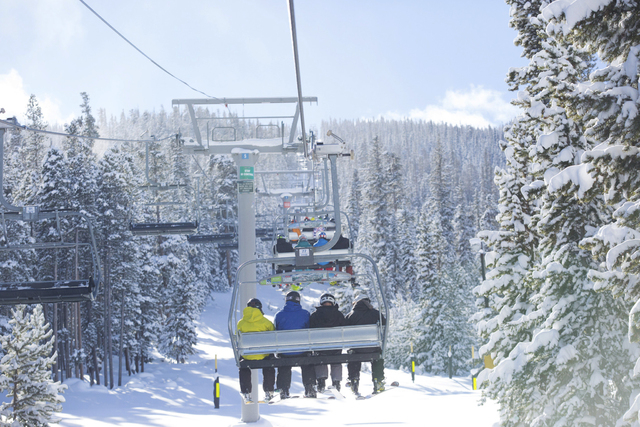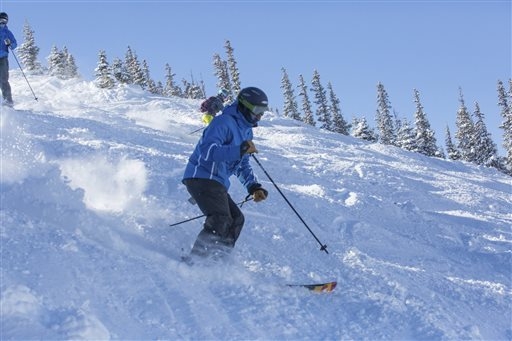Skiing is more affordable than ever … or is it?



DENVER — In 2010, the price of walk-up, single-day lift ticket at Vail and Beaver Creek ski resorts topped $100. Aspen quickly followed suit, and ticket prices at resorts across the country have consistently increased in the years since. The trend has raised a question that has dogged the ski industry for years: Is the sport becoming unaffordable for the middle class?
Industry leaders say that even though last-minute lift tickets at some resorts now exceed $100, skiing has never been more affordable if you’re savvy about discounts.
But despite the availability of deals, a report commissioned in August by the National Ski Areas Association found that skiing in the U.S. has increasingly become a sport for the wealthy. The percentage of people who participate in snow sports with household incomes over $100,000 has risen over the past eight seasons from 45 percent of ski area visitors in the 2006-07 season to 56 percent of visitors in the 2013-14 season, according to the report.
Meanwhile, those with household incomes under $50,000 dropped from 30 percent of ski area visitors to 19 percent over the same period. Visitors who make between $50,000 and $99,999 remained steady over the years at about 25 percent.
“Snow sports participants continue to skew significantly more affluent than the general U.S. population,” according to the report, which was based on surveys of skiers and snowboarders at 87 U.S. resorts. The resorts surveyed hosted 31.9 million of the nation’s 56.5 million skier and snowboarder visits last winter.
David Becher, who helped write the report, said the drop in participation by people earning under $50,000 may have been due to the recession, but “now that the economy is improving, we might see lower-income segments in the population having more confidence.” He also cited other possible explanations for a lack of participation at lower-income levels, including interests in other sports and lack of exposure to the sport among those who grew up in non-skiing families.
Michael Berry, president of the NSAA, said ski resorts are working to attract participants from all income brackets.
“The trend certainly over the past decade has been to make the price lower, in toto,” he said. Ways to save money include half-day access, skiing at smaller resorts, and discounts for kids, seniors and groups.
Evan Reece, co-founder and CEO of San Francisco-based Liftopia, an online marketplace for lift tickets, says buying early and booking multiple days also goes a long way in lowering the price of getting on the mountain.
“If customers buy in advance, they will be rewarded by doing so,” he said. “It’s very easy to understand. You wouldn’t wait until the last minute to buy an airline ticket.”
Reece, who helped start Liftopia in 2005, also recommends that skiers and snowboarders — especially beginners — look locally when choosing from one of the more than 450 resorts across the country.
“To give skiing a try, you don’t need to book a weeklong vacation to Colorado from New York. There are a lot of local ski areas where you can learn,” he said. “People will be surprised to find what is in their backyard. Sometimes the trendy spots, they’re awesome for a great reason. But there are some areas that will surprise you.”
And while large resorts like Vail, Breckenridge and Keystone offer varied terrain and more amenities, smaller resorts can provide their own charm, shorter lift lines, less crowded slopes and cheaper lift tickets.
CJ Hartland, sales manager for Monarch Mountain in southwest Colorado, says the resort’s owners have kept lift ticket prices down by offering group rates and free skiing to kids age 6 and under and to seniors 69 and over.
The owners “want people to learn and fall in love with the sport and not have to be wealthy to do it,” she said. Walk-up tickets at the 800-acre resort, which has 53 lift-served trails, are $69; advance tickets run $57.
At larger resorts, keeping skiing affordable has come down to an intense battle over season pass prices.
Until 2009, an unrestricted pass to Vail Resorts at Vail Mountain, Beaver Creek, Breckenridge and Keystone cost $1,900. Now with Vail’s Epic Pass, skiers and snowboarders have access to those four mountains, plus 18 more resorts for $769.
“People rushed out to buy it because they thought we had made a mistake,” said Vail spokesman Russ Pecoraro. The pass could pay for itself in a week, depending on where and when you go.
The debate over pricing will likely continue, but industry leaders contend that a day of skiing and snowboarding is, well, priceless.
“There’s really no better value for a family,” said Pecoraro. “To get your family out there. To participate together. It’s the value you get from the experience and it’s not always about the price.”












